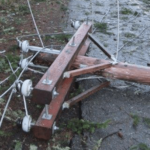Negative energy prices have become a notable phenomenon in Europe, reflecting the complexities of the region’s transition to renewable energy. In recent months, many European countries have experienced instances where electricity prices dropped below zero.
This situation occurs when there is an excess supply of energy, particularly from renewable sources like wind and solar, which can overwhelm the grid during periods of low demand. Understanding this trend is crucial as it highlights both the achievements and challenges faced in the shift toward sustainable energy.
Negative pricing happens when electricity generation exceeds demand, leading producers to pay consumers to take excess electricity off the grid. This often occurs during sunny or windy days when renewable energy output is high, but overall demand is low, such as on weekends or holidays.
While this may seem beneficial for consumers who can access cheaper electricity, it poses significant challenges for energy producers who face financial strain due to these negative prices. If producers consistently sell power at negative prices, it could deter future investments in renewable energy projects, impacting the overall growth of the sector.
The infrastructure supporting Europe’s energy system is also facing challenges. Many existing grid systems are not equipped to handle the fluctuations that come with increased renewable energy production.
Modernizing these systems is essential for managing excess supply efficiently and ensuring a stable energy supply. Additionally, slow permitting processes for new renewable projects can hinder progress, delaying the development of necessary infrastructure.
HAVE YOU READ? Mission 300 Initiative Aims for Energy Access for 300 Million Africans by 2030
Policymakers play a vital role in addressing these issues related to negative pricing. There is a growing need for robust regulatory frameworks that support the integration of renewable technologies into the energy market.
Initiatives like the REPowerEU plan aim to enhance energy security and promote sustainable practices across Europe. By focusing on these policies, governments can help stabilize the market and encourage investment in clean energy solutions.
Community resilience has emerged as an important aspect of managing excess energy production. Local initiatives, such as community battery storage projects and demand-response programs, are being implemented to help balance supply and demand effectively.
These grassroots solutions can empower communities to manage their energy needs better while reducing waste from overproduction.The broader economic context also ties into the issue of negative pricing. As Europe grapples with inflation and rising energy poverty, ensuring a stable and affordable energy supply becomes crucial for economic recovery.
Negative prices highlight the need for a reliable energy system that can support both consumers and producers while fostering economic growth.Looking ahead, addressing the challenges associated with negative pricing presents opportunities for innovation in energy management practices.
By investing in new technologies and improving infrastructure, Europe can create a more resilient and sustainable energy system. This transition not only benefits the environment but also positions Europe as a leader in renewable energy development.
To capitalize on this potential, strategic planning and investment in infrastructure are essential. By addressing these issues head-on, Europe can navigate its path toward a sustainable future while ensuring that all stakeholders benefit from this transition.




